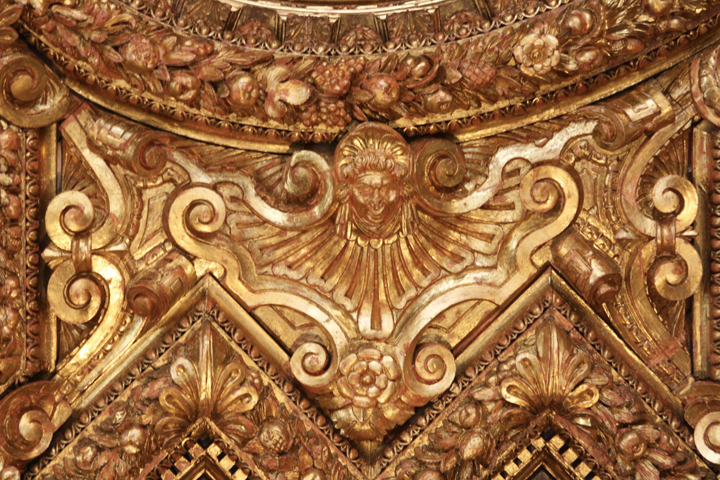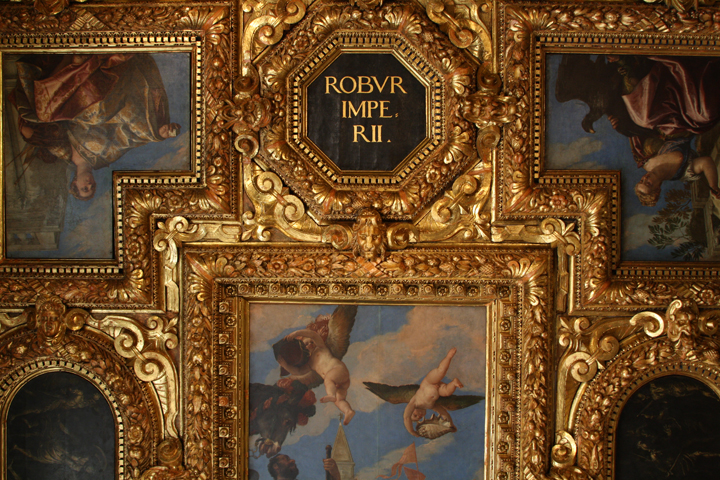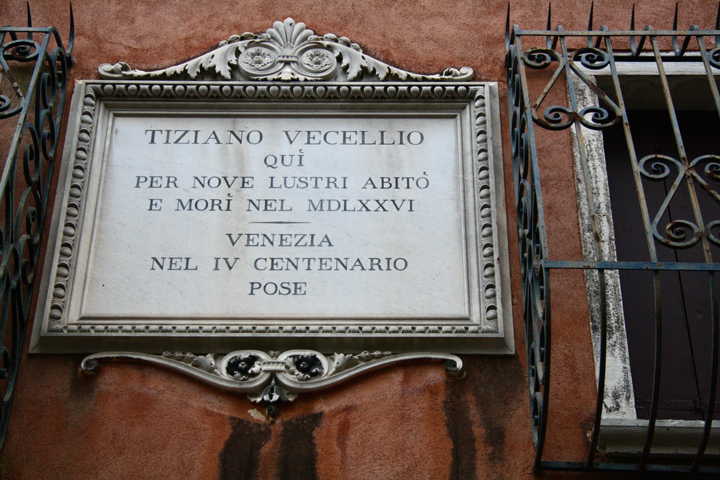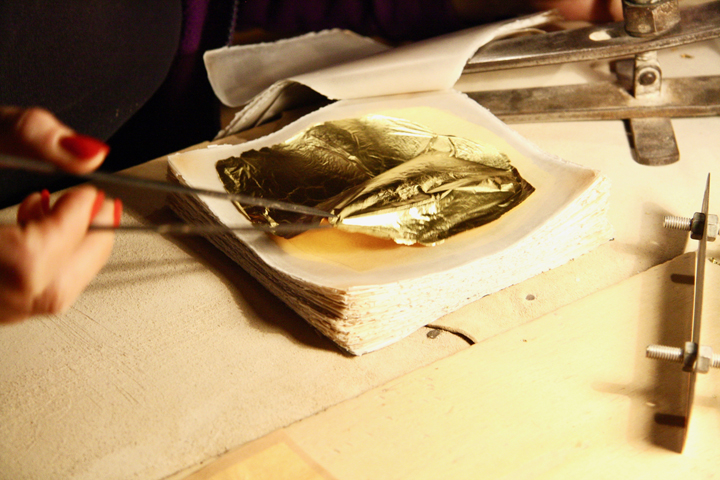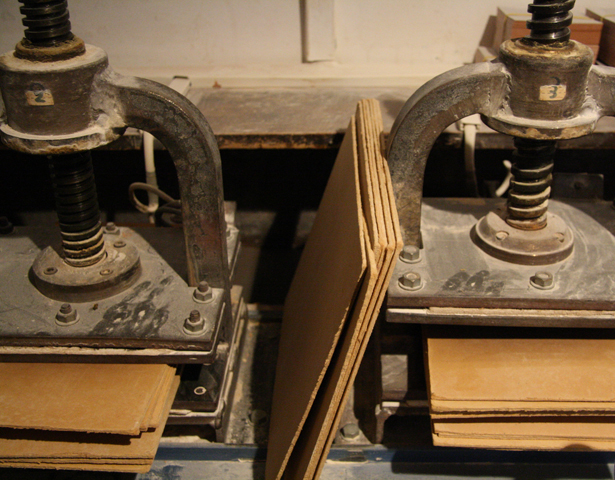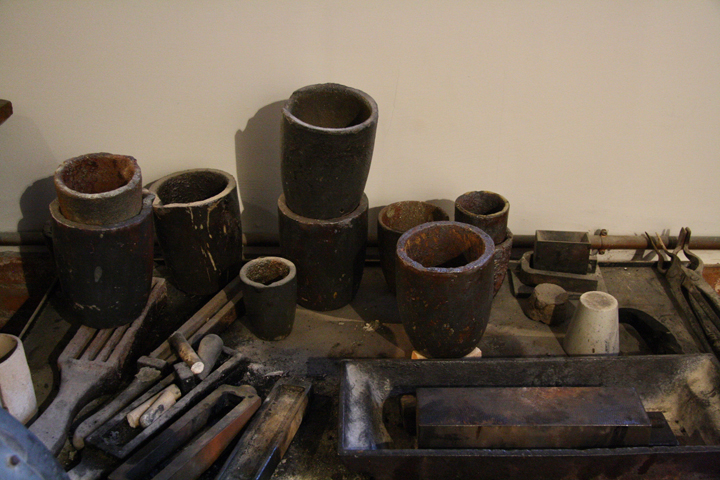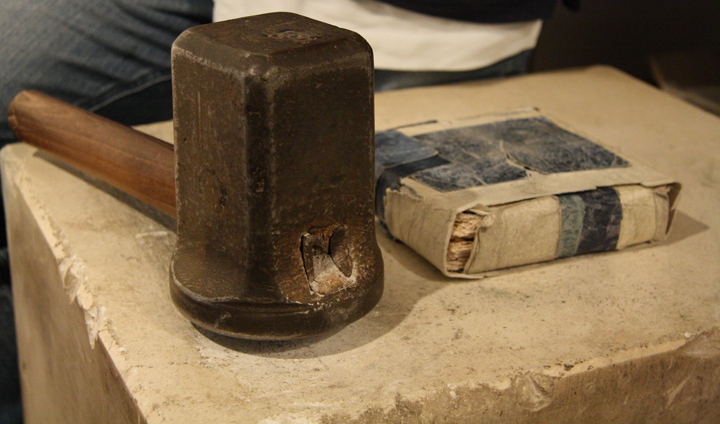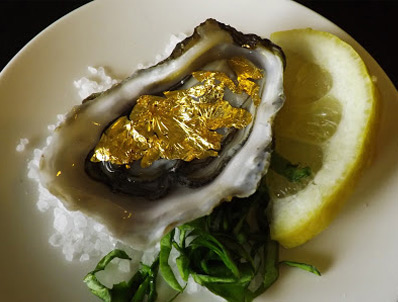When Venetians loved gold more than Midas did
St Mark’s square and its gilded monuments
Have a look at the paintings in the Accademia Gallery by Gentile Bellini. You will discover gold leaf was used to decorate marble, limestone and metal for the architecture of the Doge’s palace and St Mark’s Basilica. And why would the Ca’ Contarini be called the Ca’ d’oro if it weren’t for the gilded marble façade shimmering on the Grand Canal?
A display of wealth that went beyond the need to symbolise Heaven inside St Mark’s church. Here 8,500 square meters of gold mosaics were the expression of the Venetian ruling class’s “incontinence of gold”, too (Wladimiro Dorigo, 1986).
More gilded art works
A golden earth globe shimmered in front of the Custom’s House at the entrance of the Grand Canal. Fortune was standing on top of the gilded earth, moving as the wind changed direction, to tell that Luck may change unexpectedly. But hopefully for the good. And talking about weather-vanes, the archangel Gabriel on top of the bell tower, completely covered in gold leaf, still today helps us understand how the tidal movement goes.
And then you would go inside the doge’s palace and the gilded frames in eccentric shapes of the paintings would engage a competition with the colorful canvas. Or the gilded stucco work of the gigantic fireplaces covering entire walls in the prestigious rooms of the government palace. Or the fancy idea of decorating the walls with purple painted and gilded leather featuring a peony motif.
The origin of love for gold
The origin of this love in a mercantile empire is to be retraced in the modernity of the new value that seized the Venetian society, money. Certainly not viewed as dirty or symbol of the devil: Venice loved money.
At the same time, Byzantium. Those four horses in gilded bronze Venetians looted in Constantinople during the Fourth Crusade bespoke of the strategy to become a powerful and prestigious protagonist on the Mediterranean stage.
And eventually ancient Rome. Commissions as the golden staircase in the Doge’s palace. Or the similar staircase of the National Marciana Library. Or the gilded stuccoed vaulted ceiling of the staircase of the Patriarch Giovanni Grimani in his private palazzo. Venice in the 16th century surely perceived the excellence of the Emperor Nero’s Domus Aurea as a means to be a new Rome among the Ottoman Empire, the Holy Roman Empire of Charles V and the Papacy.
Lost in the analysis of the historical significance and the artistic achievements, for too long I missed an essential element of the whole story… who was making the gold leaf?
The Mario Berta Battiloro and their tradition
You may know that in Venice there’s still the only artisanal gold beater laboratory left in Europe. What an amazing place! First of all because this was the home of the famous painter Titian. His last years were spent in this house, at that time facing the northern lagoon and viewing the Dolomites in the distance.
Ms Sabrina Berta, her husband Marino Menegazzo and their daughters Eleonora and Sara, warmly welcomed me in a dimly lit room. Under the lamps illuminating the desks, but also on the wooden floor, traces of gold leaf were sparkling. “The darkness helps us detect the imperfections in the gold foils”, explained Sabrina, to justify why she had not turned the main light on.
The female touch and breath
These ladies handle the gold leaf, using wooden sticks, with kindness and few precise movements. And breathe. It’s their breath that flattens the gold leaf while they trim the foil in a precise square and then place it between thin sheets of delicate paper. It takes years to learn how to breathe to achieve the right result. Controlling how strong you breathe. If you breathe in the wrong way, the foil of gold can roll away and then you can no longer use it.
In the other rooms, there’s a lady that prepares the paper.
Beating gold leaf
Crossing a garden, you reach the room where Mr Marino turns gold into gold leaf. As the ladies in the other rooms, Marino also follows the same steps as in the 18th century. Same movements. The gold is first of all cast into moulds and turned into ingots.
Then the ingots are laminated and the little squares of laminated gold are placed between sheets of paper in a leather case.
Marino beats this case a first time. Then the gold leaf is again cut in four smaller pieces each. The cases are beaten rhythmically on a block of marble that keeps the gold cold and avoids heating. For longer than an hour. Hammers vary in their weights, from 3 up to 8 kilos.
Holding the hammer parallel with the forearm. Counting how many times the hammer beats the case with the gold leaf piled inside. The gold leaf spreads regularly, while the case gets turned around and around so the hammer is beating at the right pace on the right spot for the right number of times. Depending on how thin the gold leaf must be, the case gets beaten from 2000 up to 3000 times.
You need their expertise. Sure, machines can do the job too. But it’s not the same. Working by hand, the texture does not get altered and the final result is like velvet. It does not tear apart. It’s softer. Less metallic. To be used to restore the ancient art works, or produce mosaics tiles and to keep alive the ancient heritage of Venice.
But also for cosmetics, beauty treatments and exceptional make-up. Or food, chocolate, exquisite seafood, liquors and cocktails. So pure you can use it just the way Midas would have loved. But not to die for it…
by Luisella Romeo
registered tourist guide in Venice, Italy
www.seevenice.it






